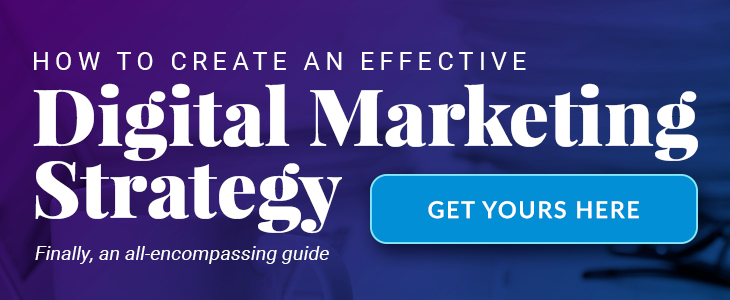
The Digital Marketing Funnel in Action—Awareness. Nurture. Convert.

This blog post is Part 3 in a three-part series on the digital marketing funnel, including what it is, how to use it strategically and examples of how companies are successfully implementing it.
While the digital marketing funnel can contain many different stages (for example, ten) and be structured in many different configurations (for example, inverted), at the core there are three essential steps that no marketer can leave out: building awareness (top of the funnel), nurturing prospects (middle of the funnel) and converting prospects (bottom of the funnel).
While Part 1 in this blog series looked at the various stages and shapes of the ever-evolving digital marketing funnels and Part 2 shared tips for optimizing your funnel, Part 3 provides examples from three companies—Help Scout, CrazyEgg and Optimizely—on creating content to support the three core stages.
Goals for Awareness, Nurture and Convert StagesWe’ll start with a short review of the purpose of the three core stages of the digital marketing funnel.
Stage 1—“Top of Funnel”—Create Awareness. Prospects today typically discover brands and their solutions on social media platforms like Facebook, Twitter, YouTube and LinkedIn. At this stage, many consumers don’t yet know about the products, or even realize they need the solutions. So, the goal is twofold: make them aware of the problem and help them understand the benefits of the solution. Engagement can take a variety of forms, such as free offers for educational content like infographics and webinars.
Stage 2—“Middle of Funnel”—Build Interest. The nurturing stage can be the longest phase in the digital marketing funnel. In fact, many marketers break it up into multiple steps, such as education, research, evaluation and justification. The goal of these steps is to provide consumers with more detailed insight about their problems and the solutions in ways that move them closer to making a purchase decision. Great content options for this stage are comparison charts or videos, customer case studies and buyers’ guides. At this stage, the goal is not to overwhelm the consumer with offers, but provide the necessary information to be considered.
Stage 3—“Bottom of Funnel”—Support Sales. The bottom of the funnel is where the buyer converts from a prospect into a customer. Your biggest hurdle will be to produce content that triggers a user into action. Marketers should support the sales process by answering all their questions and making consumers feel confident in the product’s value. Great bottom-of-the-funnel content messages include free product trials, product samples and product demos.
3 Real-World Digital Marketing Funnel Examples
Here are three examples of content at all three stages of the digital marketing funnel at Help Scout, CrazyEgg and Optimizely.
HELP SCOUT DIGITAL MARKETING FUNNEL EXAMPLE
Top of the Funnel
At this stage, Help Scout is making an infographic offer on Facebook to attract new prospects.
Middle of the Funnel
In the middle stage, Help Scout combines a video case study with a price comparison chart that includes a competitor to educate its prospects and move them closer to making a purchasing decision.
Bottom of the Funnel
In this example, a free trial is the conversion goal. To support this step, Help Scout’s free trial form includes a list of compelling features included in the “Plus plan.” Also, note the short yet compelling trust-building message at the bottom of the list: “Join 8,000+ Companies.”
CRAZYEGG DIGITAL MARKETING FUNNEL EXAMPLE
Top of the Funnel
At this stage, CrazyEgg makes a free webinar offer on Twitter to attract new prospects.
Middle of the Funnel
Here, CrazyEgg provides prospects with a customer case study containing a compelling result to inspire them to seriously consider its solution.
Bottom of the Funnel
In this example, CrazyEgg goes for the sale. Its sales page includes bites of compelling comment to push the prospect to make a selection, including “View your heatmap” (immediate reward), “Get started in 60 seconds” (it’s fast), “free for the first 30 days” and “Trusted by 100,000+ companies” (includes logos for extra trust building). Also boosting conversion are four pricing levels, clear lists of features and a highlighted “most popular” option.
OPTIMIZELY DIGITAL MARKETING FUNNEL EXAMPLE
Top of the Funnel
At the top of the funnel, Optimizely announces its upcoming conference to capture the awareness of business prospects on LinkedIn.
Middle of the Funnel
At this stage, Optimizely offers prospect knowledge tools that will educate them to understand why they need its solution, such as optimization tips survival guide.
In the sales stage of the funnel, sales-enabled prospects click to a simple page that describes and lists the features of Optimizely’s plan options. They can click a simple button, “Get Started,” which opens a simple form. In no time, they are on their way to using the product of their choice.





